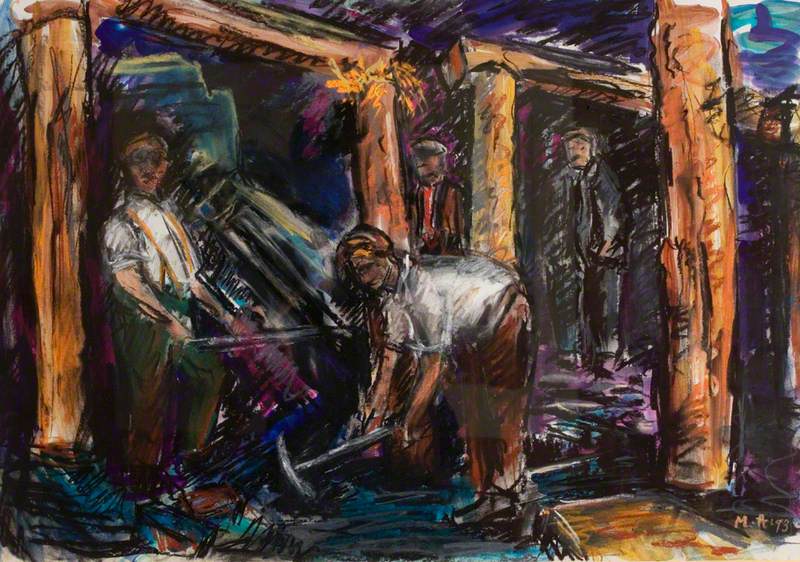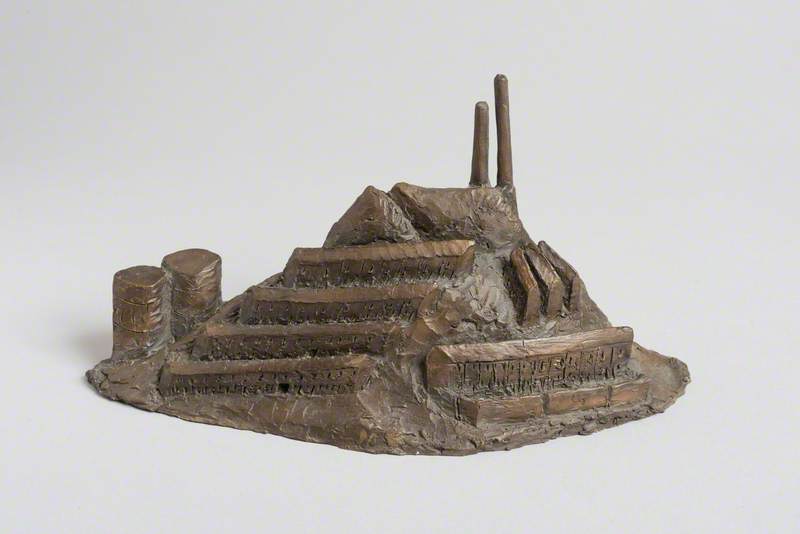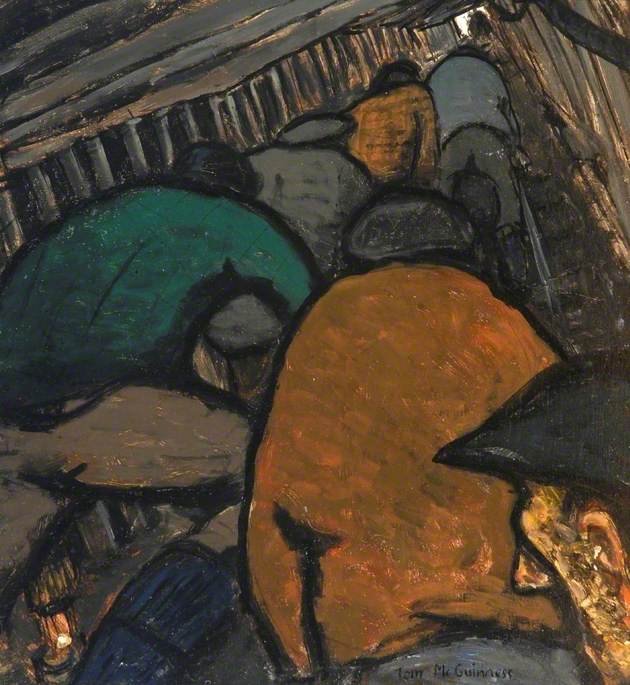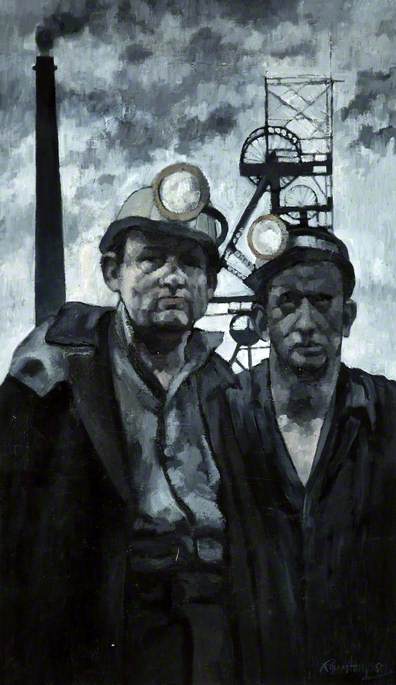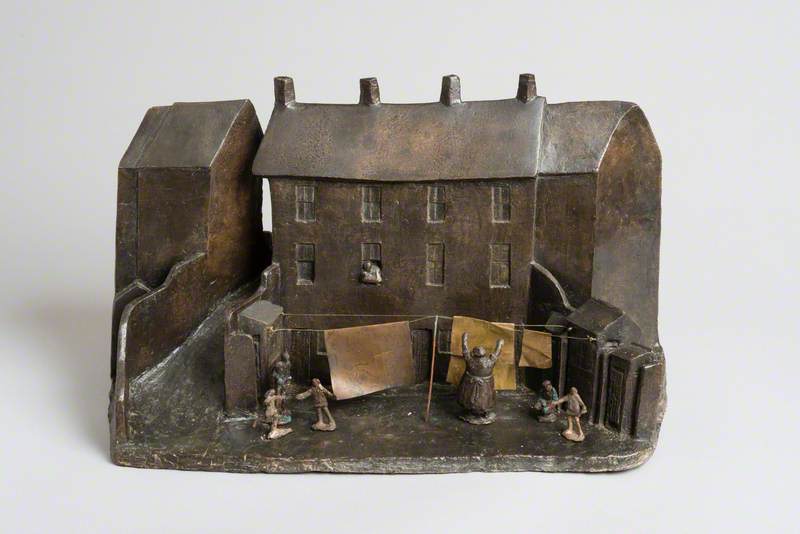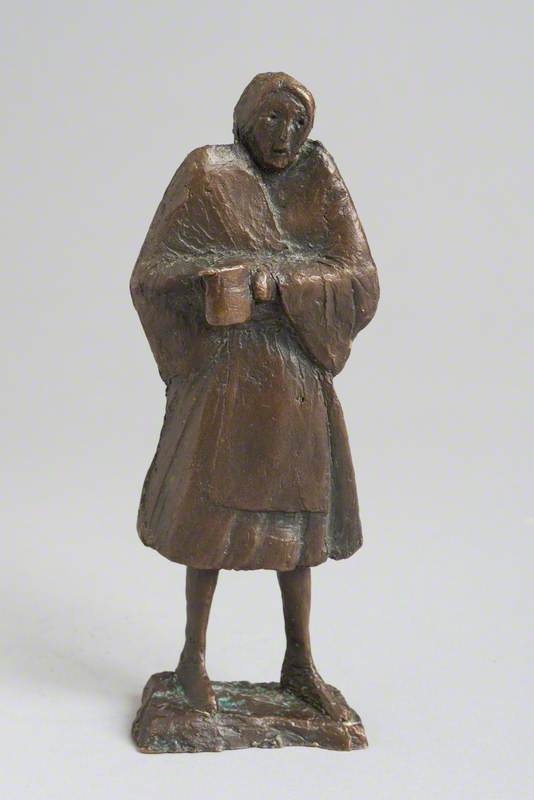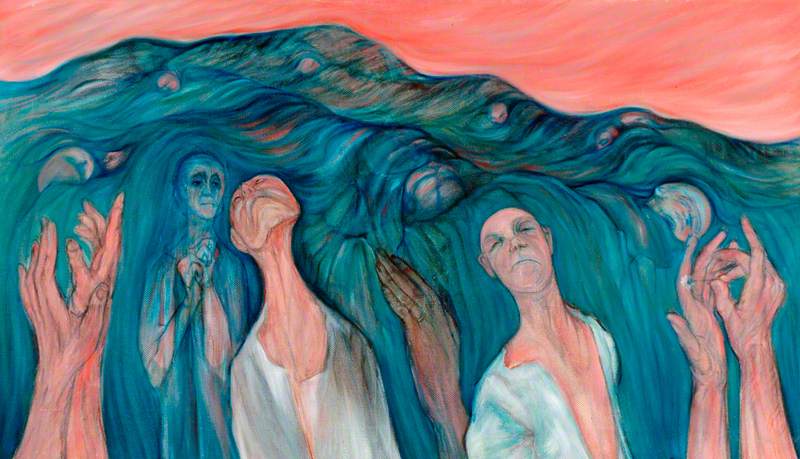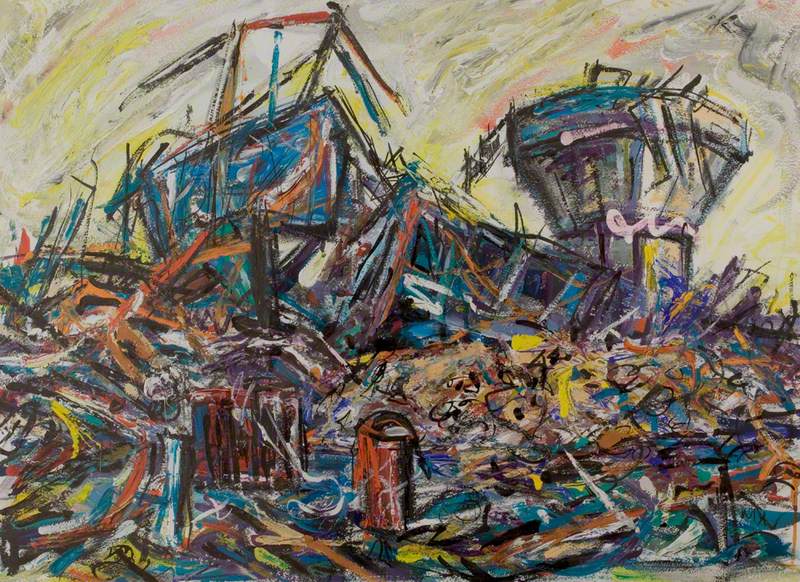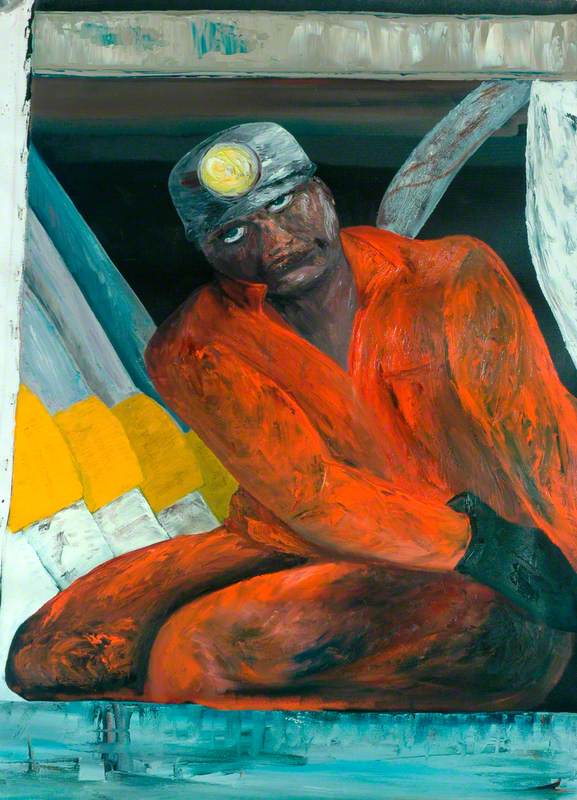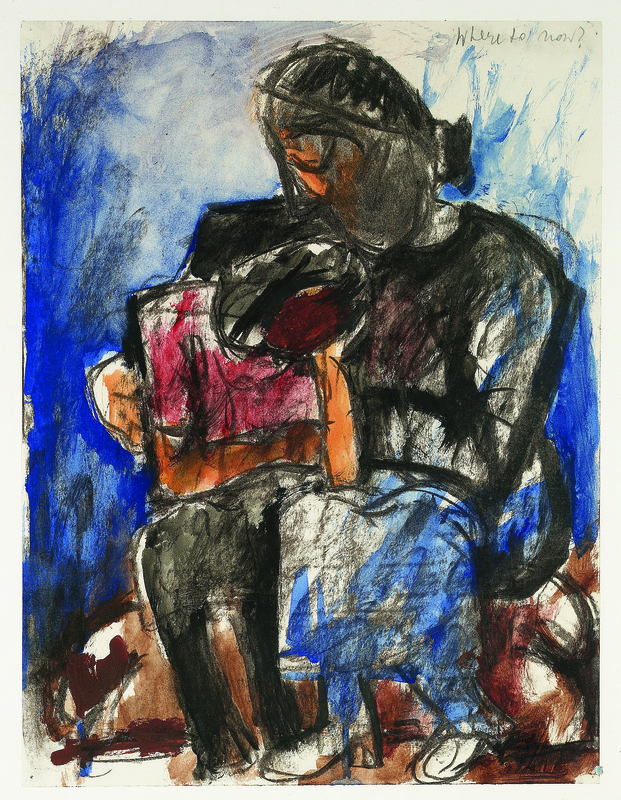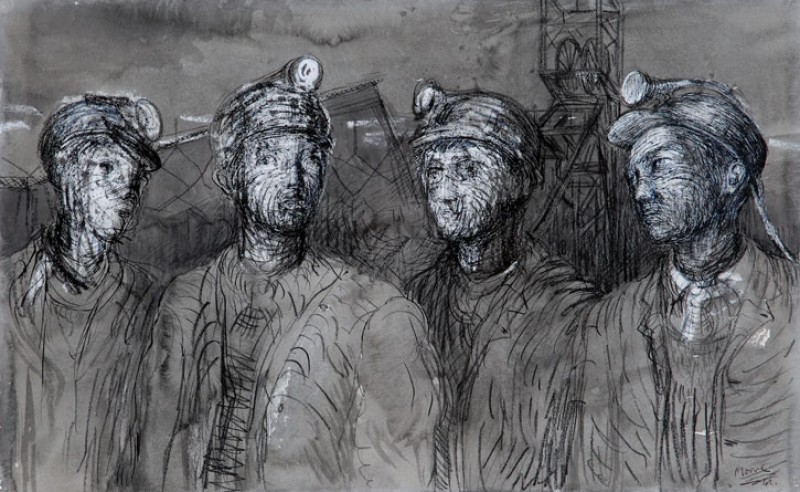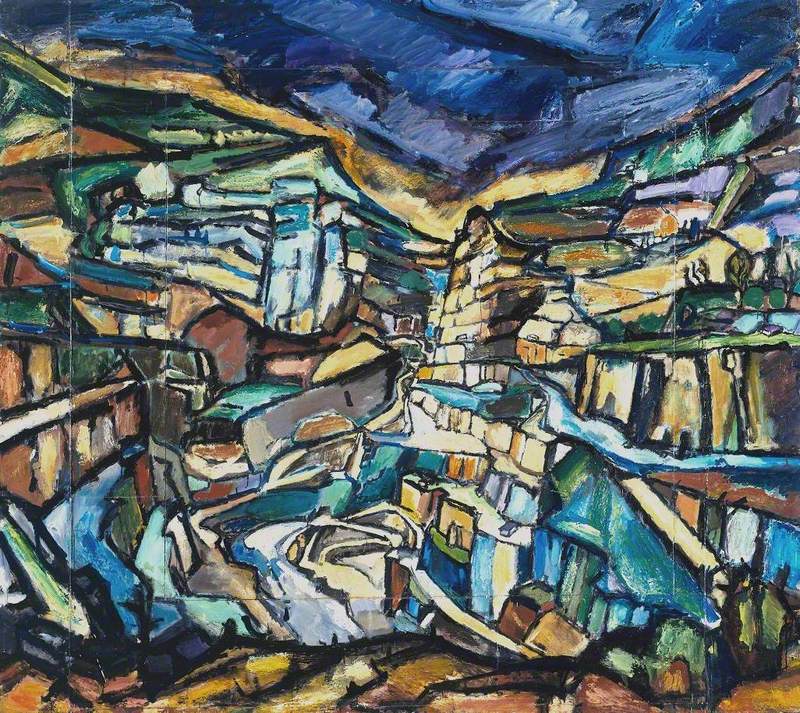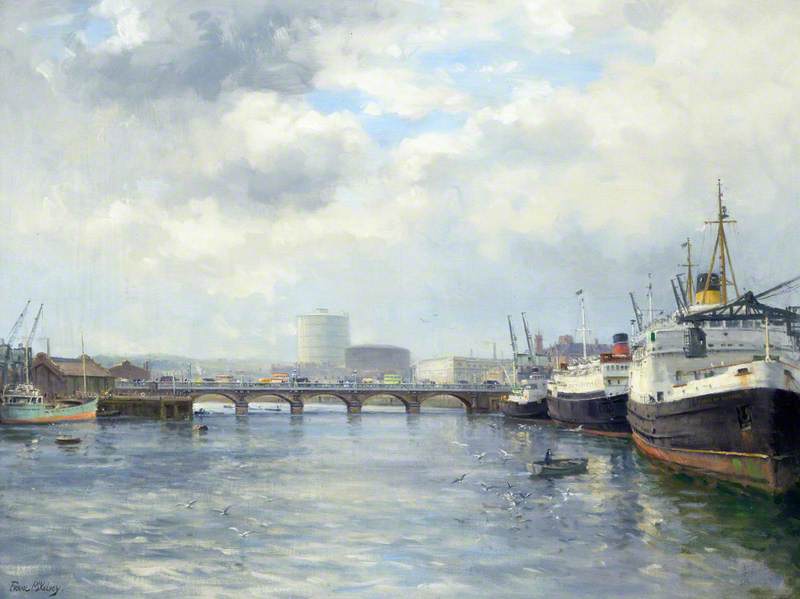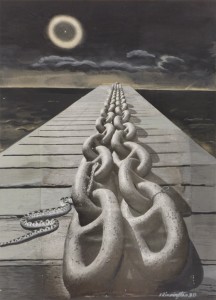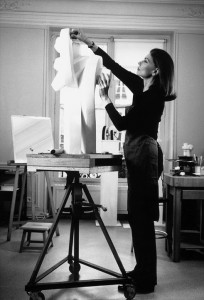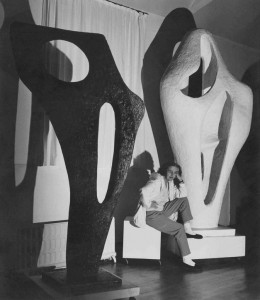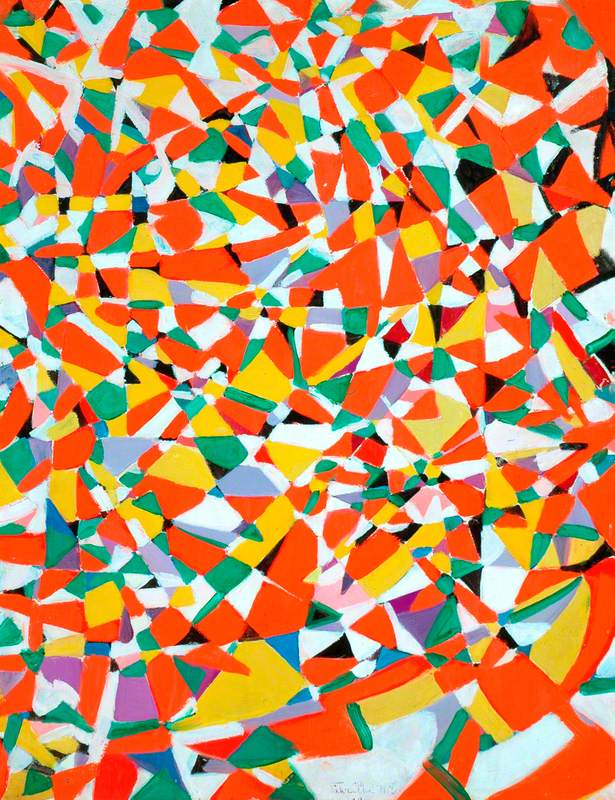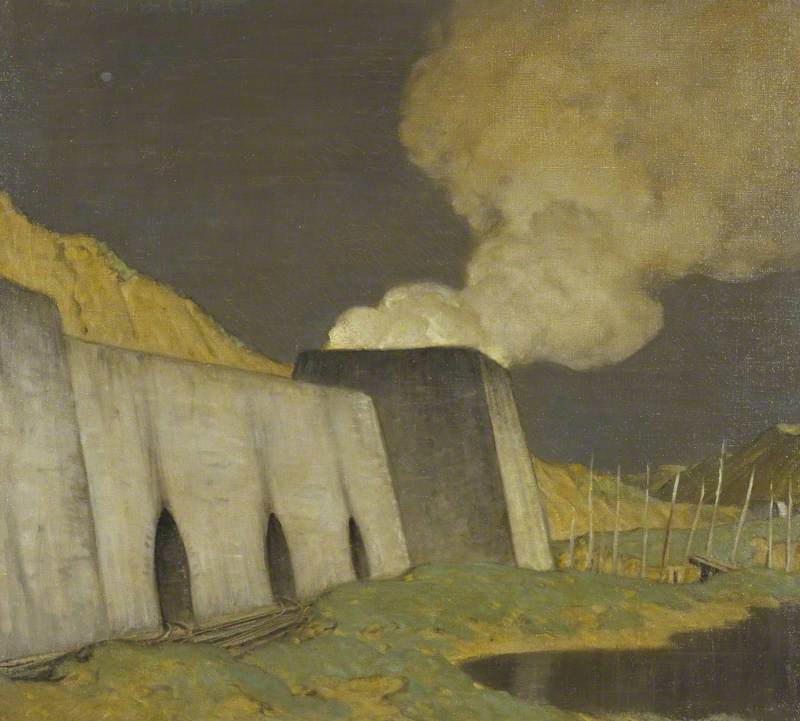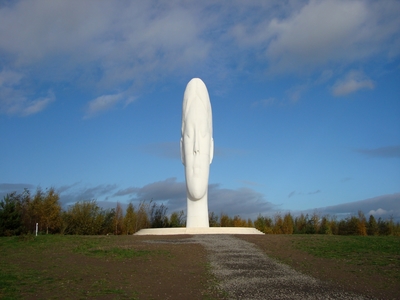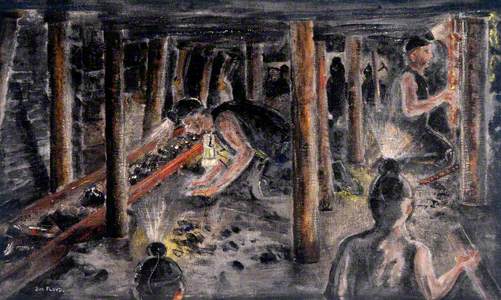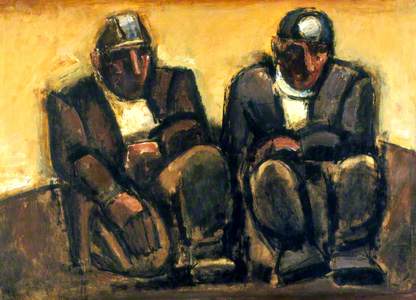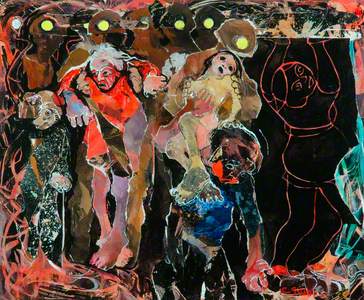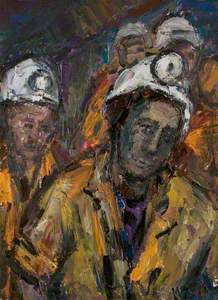At the top of Sutton Manor, an ex-colliery site in the town I was born in, sits a giant sculpture of a disembodied head. The head, or as it's actually titled, Dream, is twenty metres high and was designed by Spanish artist Jaume Plensa in consultation with a group of ex-miners from the St Helens community. Commissioned through the Art Fund and Channel Four, it is said to represent the head of a nine-year-old girl, deep in contemplation.
When it was unveiled in 2009, I too was a nine-year-old girl. What I remember of the playground response to Dream revolves mostly around bemusement. Why had a great whopping head been built to commemorate the legacy of an ex-mining town? It's a question that some might still ask, though Dream was well received, and is now firmly part of the local landscape.
Tasked with commemorating the Sutton Manor Colliery site, the project sought to create a memorial that wasn't paralysed by hero worship or dated iconography. Dream emphasises futurity, imagination and optimism.
In a corrective to prevailing ideas about the nature of 'accessible' art, the ex-pitmen themselves rejected Plensa's first proposal: a large lamp titled The Miner's Soul. It was predictable, safe and bore too much resemblance to monuments elsewhere in the town, such as Arthur Fleischmann's The Miner (1964).
The Miner (Anderton Mining Monument)
1964
Arthur Fleischmann (1896–1990) and John Galizia & Sons (active 1956–1984) 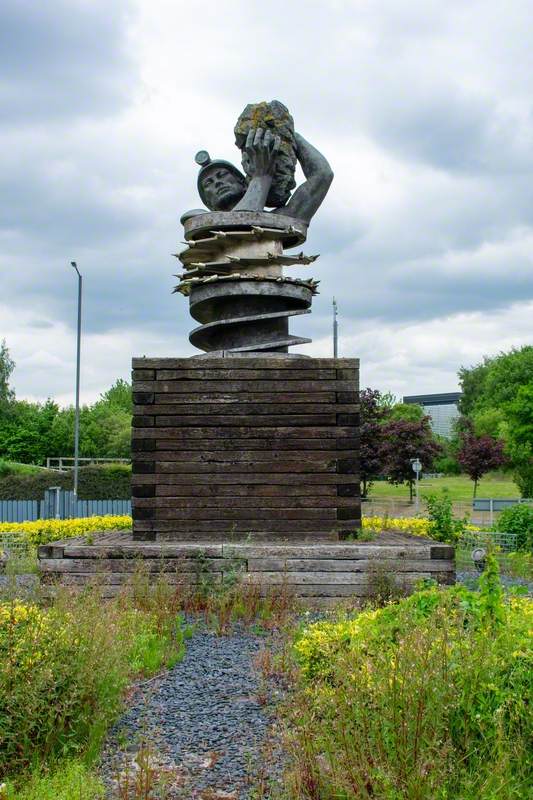
The story of British mining has traditionally been conceived of in terms perfectly exemplified by Fleischmann's piece: as something strong, imposing and unequivocally masculine. With 1,191,000 individuals employed by the industry in 1921, and many more Britons' lifestyles made possible by it, this story is intrinsic to modern Britain. Yet the St Helens pitmen felt there was more than one way to tell it, and so too should we.
To suggest as much is not to deny the importance of those works that laid the ground for mining as an artistic subject. As well as a rich body of public art dedicated to commemoration, there is now a well-established relationship between modern British art history and the mining industry.
The work of the Ashington Group (immortalised by playwright Lee Hall as the 'Pitmen Painters'), for example, emerged from art appreciation classes held by the Workers Education Association in 1934.
In County Durham, painters such as Norman Cornish and Tom McGuinness found inspiration in their own experiences of the mines, while the influence of mining on established artists such as Henry Moore and Josef Herman is also worth noting.
Though this work is far from monolithic, examples by Roger Hampson and Ted Holloway give some flavour of the aesthetic modes that dominate mining art.
Their paintings are of a typically social realist bent: insistently figurative, grey and powerful in their evocations of endurance and homosocial affinity.
Confronted with the prevailing iconography, it might be easy to imagine that mining was a wholly masculine concern, but much of the Art UK collection tells a very different story. Many women artists have claimed mining as their own source of inspiration. Their works allow us new insights, if not into the inner workings of industry, then into the familial and social resonances of the pit.
Forty years on from the strikes, no deep mines remain in operation in the UK, yet their absences – and the psychological toll of the 1984 strikes – are still felt in communities across the country. With this in mind, social resonances seem newly pressing.
We might think of Betty Miller's My Village series, which saw the mining community of the artist's childhood transformed into miniature bronze sculptures. Backyard at first seems unassuming, but to look closely is to see the idiosyncrasies of Miller's Royston rendered in attentive detail. Far from a valorisation of individual workers, My Village is an epic ensemble piece in which every figure has its role to play.
Neglected figures such as the Old Biddy are lent the smooth, statuesque form of a Barbara Hepworth (one of Miller's inspirations), and community is cast with an unexpected grandeur. All the while, Miller hovers in the background, perfectly content to get her hands dirty in the moulding.
In a different form, artists such as Dorothie Field and Constance Stubbs both edged closer towards abstraction in their depictions of the industry.
Field's Aberfan takes the tragedy of 1966 as its subject, when a landslide of coal waste engulfed the village and killed 144 people, the majority of whom were children. The painting veers towards a depiction of the moment of impact itself, as warped bodies are masked by rushes of blue, obscured until closer inspection.
Aberfan emphasises the vulnerability of the body, and the intense physical pressure placed on it by mining. Yet the work also locates a much broader vulnerability, which is seen to impact more people than just the workers. Although it speaks to a specific historical moment, Aberfan moves beyond pure figuration, instead utilising unexpectedly bright colours and distortion. It is a painting that acknowledges the limitations both of human strength and of the artist's capacity to represent unimaginable suffering.
Painted in 1992, Constance Stubbs' Pit Props is a complex articulation of many of the debates that still waged about the figure of the miner in public life. In it, a faint white bar stretches across the top of the canvas, supported by a red-outlined figure. The miners themselves are pointedly anonymous, easily lost in a vision of frantic chaos and conflict.
Stubbs wrote that it was 'youth' depicted by the outstretched red form 'on whose shoulders the burden falls'. The youthful figure exists within an almost wholly different, darker context. She looks out at the viewer in blank panic, perhaps struggling to bear what is still to come.
As in Marjorie Arnfield's Rufford Colliery Demolition (c.1993), abstraction is utilised here in the aftermath of pit closures, gesturing towards a national experience that lacked a language with which to articulate what was happening.
These last two paintings, in particular, remind us of the ongoing questions surrounding mining – and not only about its legacy but the practical future of its ex-heartlands. The expressions of uncertainty produced by these female artists are no less relevant 30 years later, a fact supported by a report commissioned by the Coalfields Regeneration Trust in 2019, showing conclusively that coalfield neighbourhoods make up some of Britain's most deprived communities.
Organisations such as the East Durham Artist Network (EDAN) promote the art still emerging from such communities. The work of EDAN member Jean Spence draws on writer Avery Gordon's concept of 'social haunting' in relation to post-industrial landscapes, and is also inspired by the social haunting project at Manchester Metropolitan University.
Spence's Twisted Seams combines needlework, blasted fragments from the Dawdon Colliery and poetry based on the experiences of feminine loss and anxiety.
Twisted Seams
2023, hand-knitted textile with poem on found boot sole by Jean Spence 
Bringing together several of the perspectives contributed by the women artists discussed above, the work is at once an attentive reclamation of detail and craft and an attempt to speak effectively to experiences of severe loss. It uses ruptured abstraction to mark the uncertainty felt by those in landscapes now 'haunted' by the ghosts of industry.
To attempt to reintroduce these works into coal mining's visual culture is not to suggest that women artists are by nature more adept at the creative, the emotional, or the abstract. It is simply to ask whether it may be the case that women, those most experienced in dealing with the social ramifications of industry, might be particularly well placed to help us understand what remains of those ramifications today.
It is also to demand an expansion of the experiential canon. The same must be done for queer experiences of mining, recently confronted in Andrew McMillan's book Pity, and for the experience of Black miners, explored brilliantly by Norma Gregory of the Black Miners Museum – as well as for the forgotten stories of many others too. Often, new narratives necessitate new forms, and the incorporation of experimental strategies allows us to expand on the meanings of mining, in the past and today.
Ex Terra Lucem or 'From the Earth Comes Light' is the St Helens town motto, first associated with Sutton Manor Colliery itself. It was for some time also the working title for Dream. If that phrase is to have any resonance now, it ought to move us to shed light on the experiences and forms so often removed from, or deemed irrelevant to, the dominant narratives of industry. Only then might art bring us closer to the full complexities of a faded culture, and only then might it inspire us to work out what could come next for so many post-industrial communities.
Jennifer Jasmine White, writer and researcher
This content was supported by Jerwood Foundation
